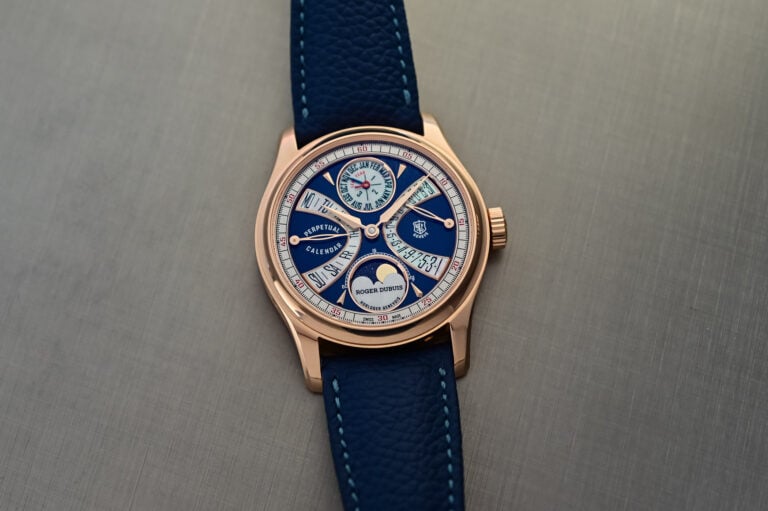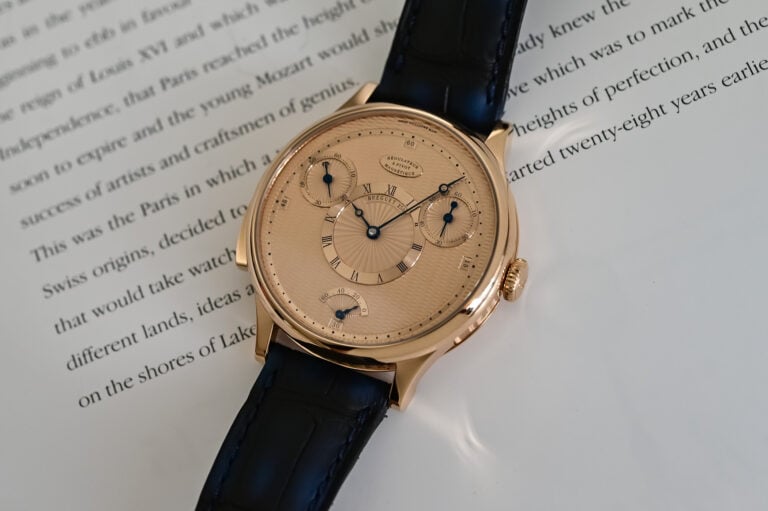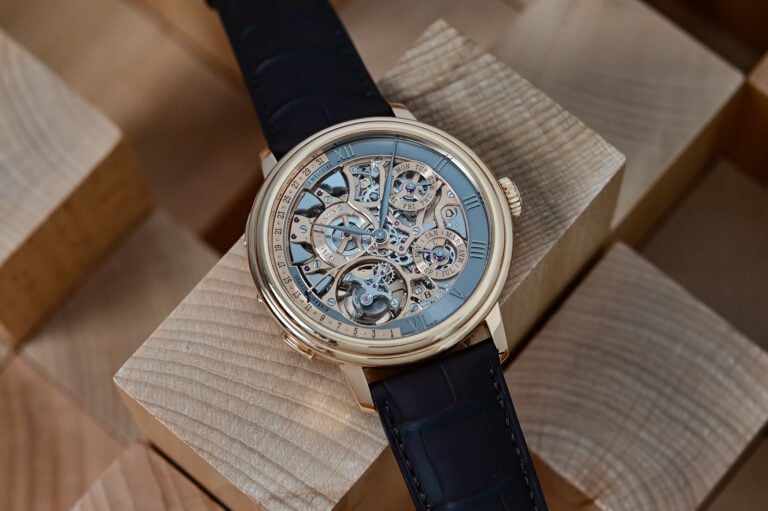Typically on the bezel of a chronograph watch, it’s a printed or engraved scale for calculating speed over a measured distance (or measure distance based on speed).
A guilloché technique very similar to Clous de Paris, resulting in miniature pyramid-like squares, primarily used to decorate a dial. A Petit and Grande Tapisserie can be distinguished. It can also be referred to as a hobnail pattern.
A printed scale on a watch dial that’s used to calculate distance based on time. It’s often used to measure distance based on both visible and audible actions. For example, a chronograph hand is activated when lightning is seen and stopped when thunder is heard. Similar to a tachymeter.
A region on Earth that observes a specific, consistent time schedule based on its position as the Earth rotates (each zone is either one hour ahead or behind its neighboring zone). Time zones are generally based on countries and divisions within them instead of exact longitudinal coordinates for convenience and simplicity.
Generally refers to a wristwatch or pocket watch, and is commonly used to describe high-end or luxury watches.
A very light and strong metal with a silver/grey color that is both antimagnetic and very corrosion resistant. It has the highest strength-to-density ratio of all metallic elements and is a popular material for luxury watch cases and bracelets.
A barrel (rectangular-ish) shape attributed to both watch cases and movements.
A fairly broad term referring to a watch with a specific function/task in mind. It can be a simple, rugged field watch, pilot’s watch, highly antimagnetic watch, chronograph, etc.
The Tourbillon was first developed in 1801 by Abraham-Louis Breguet to compensate for the gravitational pull on a pocket watch’s escapement, mostly worn in vertical position. It is an advanced complication with a specialized cage housing both the balance and escapement, which continuously rotates 360 degrees (usually once per minute) to counteract the forces of gravity and improve accuracy. The one-minute rotation often doubles as a small seconds indication. The balance, escapement and cage rotation use one power train, while the similar carrousel uses two.
A decorative finishing technique that is hammered onto a dial or component. A tool called a burin leaves small indentations and cuts with each strike of the hammer, resulting in a finely detailed texture. The trick is to get all the indentations and cuts at more or less the same depth.
A chronograph watch with three separate sub-dials.
The most complex Tourbillon mechanism in watchmaking, where the regulating organ of a mechanical watch is suspended in three cages, each rotating in its own speed and direction in order to improve accuracy and counteract gravitational pull on the balance spring.
An isotope of hydrogen that’s highly luminescent and applied to watch hands, indices, etc. to glow in the dark. Due to the radioactive nature it is no longer used in watchmaking as a paint, but instead can be incorporated in the form of Tritium Gas filled glass tubes that glow very bright. The Tritium Gas filled tubes pose far less of a risk to one’s health.



